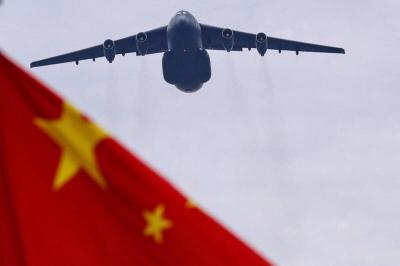The Taiwan Space Agency (TASA) has signed a memorandum of understanding (MOU) with the Polish Space Agency (POLSA) to lay out a framework for the two nations to forge closer cooperation in the space industry.
Based on the MOU, Taiwanese and Polish companies and academics would seek to explore cooperation possibilities in the areas of telecommunications and cloud-based or Earth observation services, POLSA vice president for industry cooperation Michal Wiercinski said at the Taiwan International Assembly of Space Science, Technology and Industry (TASTI) in Kaohsiung.
Wiercinski is heading a Polish delegation at the event to showcase his country’s competitiveness in fields related to the space industry.

Photo: Wang Jung-hsiang,Taipei Times
TASTI is an annual event organized by TASA that aims to bring together experts in the sector and allow them to share their insights.
This year’s event began on Monday and ends today at the Kaohsiung Exhibition Center.
TASA and POLSA previously signed an MOU to boost two-way cooperation on space on the sidelines of the Space Symposium in Colorado Springs, Colorado, in April, Wiercinski said, adding that Poland is taking part in the Taiwan event for the first time this year.
Poland is a newcomer in the space industry compared with other European powers such as France or Germany, but it has made outstanding progress since joining the European Space Agency in 2012, he said.
It has a cluster of about 70 companies with highly energetic and skilled engineers, and at a time when Poland’s small and medium-sized space companies are looking beyond the saturated European market, “Taiwan is on our list,” he said.
Wiercinski hailed Taiwan’s advanced satellite manufacturing capability, and said he was also impressed with its rocket research and development.
All this offers great potential for engagement between Taiwan and Poland, capable of bringing mutual benefits to the two sides, he said.

Beijing could eventually see a full amphibious invasion of Taiwan as the only "prudent" way to bring about unification, the US Department of Defense said in a newly released annual report to Congress. The Pentagon's "Annual Report to Congress: Military and Security Developments Involving the People's Republic of China 2025," was in many ways similar to last year’s report but reorganized the analysis of the options China has to take over Taiwan. Generally, according to the report, Chinese leaders view the People's Liberation Army's (PLA) capabilities for a Taiwan campaign as improving, but they remain uncertain about its readiness to successfully seize

Taiwan is getting a day off on Christmas for the first time in 25 years. The change comes after opposition parties passed a law earlier this year to add or restore five public holidays, including Constitution Day, which falls on today, Dec. 25. The day marks the 1947 adoption of the constitution of the Republic of China, as the government in Taipei is formally known. Back then the Chinese Nationalist Party (KMT) governed China from Nanjing. When the KMT, now an opposition party in Taiwan, passed the legislation on holidays, it said that they would help “commemorate the history of national development.” That

HORROR STORIES: One victim recounted not realizing they had been stabbed and seeing people bleeding, while another recalled breaking down in tears after fleeing A man on Friday died after he tried to fight the knife-wielding suspect who went on a stabbing spree near two of Taipei’s busiest metro stations, Taipei Mayor Chiang Wan-an (蔣萬安) said. The 57-year-old man, identified by his family name, Yu (余), encountered the suspect at Exit M7 of Taipei Main Station and immediately tried to stop him, but was fatally wounded and later died, Chiang said, calling the incident “heartbreaking.” Yu’s family would receive at least NT$5 million (US$158,584) in compensation through the Taipei Rapid Transit Corp’s (TRTC) insurance coverage, he said after convening an emergency security response meeting yesterday morning. National

Taiwan has overtaken South Korea this year in per capita income for the first time in 23 years, IMF data showed. Per capita income is a nation’s GDP divided by the total population, used to compare average wealth levels across countries. Taiwan also beat Japan this year on per capita income, after surpassing it for the first time last year, US magazine Newsweek reported yesterday. Across Asia, Taiwan ranked fourth for per capita income at US$37,827 this year due to sustained economic growth, the report said. In the top three spots were Singapore, Macau and Hong Kong, it said. South